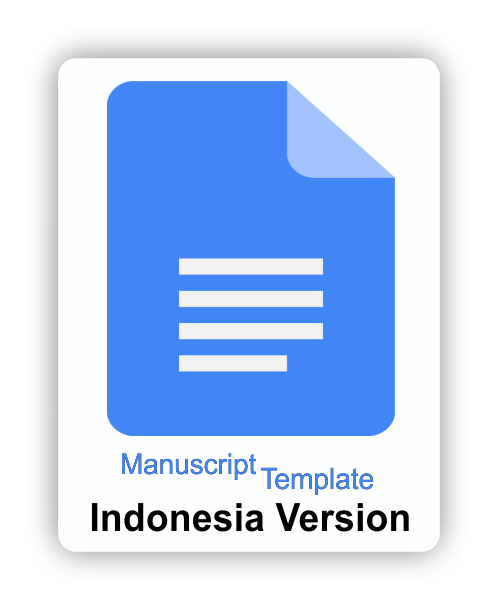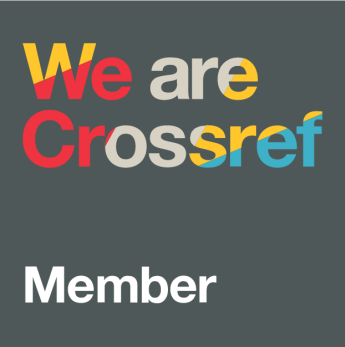The effectiveness of augmented reality in enhancing learning outcomes in a microcontroller course
Downloads
One significant challenge in technical and vocational education is students’ difficulty in achieving a deep conceptual understanding, particularly in complex subjects such as microcontrollers. Traditional methods often lack interactivity and real-world context, leading to low engagement and learning outcomes. Augmented Reality (AR) provides an immersive and interactive learning experience that enables students to visualize abstract concepts. This study examined the impact of AR-based instructional media on learning outcomes in a Microcontroller course, using a true experimental design (Solomon Four Group Design). Four student groups from four vocational higher education institutions in Makassar participated (total N = 143). Two groups received AR-based instruction, and two received conventional teaching; two of the groups also completed a pretest. Learning outcomes were assessed through essay-format pretests and posttests aligned with microcontroller learning indicators. Learning improvement was measured using normalized gain scores, and data were analyzed with normality tests, homogeneity tests, ANCOVA, independent t-tests, and N-Gain analysis. Results showed that AR significantly improved learning outcomes, with experimental groups achieving a mean gain score of 0.75 (in the high category), compared to 0.16 (in the low category) in control groups. Statistical tests confirmed significant differences between groups (p < 0.05), while comparisons among control groups indicated no substantial pretest effect. This confirms that the learning improvement resulted from the AR intervention. The findings suggest AR-based instructional media effectively enhance conceptual understanding, learning quality, and student engagement in technical education. The study concludes that AR is a viable instructional tool in vocational learning and recommends its broader use and further development in similar educational contexts.
Aditya, I. P. T., Udayana, A. A. G. B., & Swandi, I. W. (2020). Perancangan media pembelajaran interaktif ensiklopedia Wayang kamasan berbasis augmented reality. Amarasi Jurnal Desain Komunikasi Visual, 1(1), 9–21. https://doi.org/10.59997/amarasi.v1i01.32
Alamsyah, N., & Krisdiawan, R. A. (2021). Pembangunan aplikasi sebagai media pembelajaran bangun ruang tingkat SD/SMP dengan menggunakan metode marker augmented reality. Nuansa Informatika, 15(1), 23-31. https://doi.org/10.25134/nuansa.v15i1.3847
Alonzo, D., Quimno, V., Townend, G., & Zin, C. (2024). Using information and communication technology ( ICT )‑ based data systems to support teacher data ‑ driven decision ‑ making : Insights from the literature ( 2013 – 2023 ). Educational Assessment, Evaluation and Accountability, 36(4), 433–451. https://doi.org/10.1007/s11092-024-09443-8
Chang, H., Binali, T., Liang, J., Chiou, G., Cheng, K., Lee, S. W., & Tsai, C. (2022). Ten years of augmented reality in education: A meta-analysis of (quasi-) experimental studies to investigate the impact. Computers & Education, 191, 1-24. https://doi.org/10.1016/j.compedu.2022.104641
Chen, Y., Wang, X., Le, B., & Wang, L. (2024). Why people use augmented reality in heritage museums: A socio-technical perspective. Heritage Science, 12(1), 1–19. https://doi.org/10.1186/s40494-024-01217-1
Covvey, J. R., McClendon, C., & Gionfriddo, M. R. (2023). Back to the basics: Guidance for formulating good research questions. Research in Social and Administrative Pharmacy, 20(1), 66–69. https://doi.org/10.1016/j.sapharm.2023.09.009
Efremova, N., & Huseynova, A. (2021). The impact of digital technology on learning motivation and learning modes. E3S Web of Conferences, 273, 1-5. https://doi.org/10.1051/e3sconf/202127312083
Gargrish, S., Kaur, D. P., Mantri, A., Singh, G., & Sharma, B. (2021). Measuring effectiveness of augmented reality‐based geometry learning assistant on memory retention abilities of the students in 3D geometry. Computer Applications in Engineering Education, 29(6), 1811–1824. https://doi.org/10.1002/cae.22424
González, E. M. D., Belaroussi, R., Soto-Martín, O., Acosta, M., & Martín‐Gutiérrez, J. (2025). Effect of interactive virtual reality on the teaching of conceptual design in engineering and architecture fields. Applied Sciences, 15(8), 1-23. https://doi.org/10.3390/app15084205
Handani, S. W., Hidayah, S. N., & Setiawan, I. (2020). Penilaian user experience menggunakan metode technology acceptance model (TAM) terhadap aplikasi augmented reality Gamelan Jawa. JITU Journal Informatic Technology And Communication, 4(2), 1–10. https://doi.org/10.36596/jitu.v4i2.348
Jeffri, N. F. S., & Rambli, D. R A. (2021). A review of augmented reality systems and their effects on mental workload and task performance. Heliyon, 7(3), 1-14. https://doi.org/10.1016/j.heliyon.2021.e06277
Jičínská, L., Sedláčková, P., Kolek, L., Tetourová, T., Volná, K., Lukavský, J., & Brom, C. (2021). Extrinsically integrated instructional Quizzes in learning games: An educational disaster or not? Frontiers in Psychology, 12, 1-8. https://doi.org/10.3389/fpsyg.2021.678380
Kiesler, N., Smith, J. J. B., Leinonen, J., Fox, A., MacNeil, S., & Ihantola, P. (2025). The role of generative AI in software student CollaborAItion. ArXiv (Cornell University), 1-7. https://doi.org/10.48550/arxiv.2501.14084
Koumpouros, Y. (2024). Revealing the true potential and prospects of augmented reality in education. Smart Learning Environments, 11(2), 1-62. https://doi.org/10.1186/s40561-023-00288-0
Laumann, D., Schlummer, P., Abazi, A., Borkamp, R., Lauströer, J., Pernice, W., Schuck, C., Schulz-Schaeffer, R., & Heusler, S. (2024). Analyzing the effective use of augmented reality glasses in University Physics Laboratory Courses for the example topic of optical polarization. Journal of Science Education and Technology, 33(5), 668–685. https://doi.org/10.1007/s10956-024-10112-0
Leny, L., Wahidah, M., & Muhammad, K. (2024). Development of e-modules of basic laws of chemistry based on problem-based learning to improve critical thinking skills. Jurnal Inovasi Teknologi Pendidikan, 11(4), 367–376. https://doi.org/10.21831/jitp.v11i4.72576
Lichtenberger, A., Hofer, S. I., Stern, E., & Vaterlaus, A. (2025). Enhanced conceptual understanding through formative assessment: Results of a randomized controlled intervention study in physics classes. Educational Assessment, Evaluation and Accountability, 37(1), 5–33. https://doi.org/10.1007/s11092-024-09445-6
López-Bouzas, N., del Moral-Pérez, M. E., & Castañeda-Fernández, J. (2024). Improved socio-emotional skills in students with autism spectrum disorder (ASD) following an intervention supported by an augmented gamified environment. International Journal of Child-Computer Interaction, 42, 1-12. https://doi.org/10.1016/j.ijcci.2024.100683
Mahendru, N., Mai, N., & Hin, H. S. (2024). Elevating Students’ shared learning experiences with augmented reality in a digital marketing classroom. International Journal of Learning, Teaching and Educational Research, 23(5), 87–106. https://doi.org/10.26803/ijlter.23.5.5
Mokmin, N. A. M., Su, H., Chen, J., & Qi, S. (2023). Impact of an AR-based learning approach on the learning achievement, motivation, and cognitive load of students on a design course. Journal of Computers in Education, 11(2), 557–574. https://doi.org/10.1007/s40692-023-00270-2
Mukhlisin, M., Gani, H. A., & Purnamawati, P. (2022). The overview of needs analysis for development learning model based on digital in vocational education. Proceedings of the 1st World Conference on Social and Humanities Research (W-SHARE 2021), 654, 105–108. https://doi.org/10.2991/assehr.k.220402.023
Mukhlisin, M., Gani, H. A., Purnamawati, P., & Muhammad, U. (2022). Rancang bangun media pembelajaran mikrokontroller berbasis augmented reality (AR). Joule (Journal of Electrical Engineering), 3(1), 125–129. https://doi.org/10.61141/joule.v3i1.240
Mukhlisin, M., Ponta, T., & Syafar, M. (2023). Aplikasi pembelajaran mata kuliah embedded system berbasis mobile augmented reality (Mar). INSTEK: Jurnal Informatika Sains dan Teknologi, 8(1), 46–55. https://doi.org/10.24252/instek.v8i1.36704
Naithani, U., & Guleria, V. (2024). Integrative computational approaches for discovery and evaluation of lead compound for drug design. Frontiers in Drug Discovery, 4, 1-11. https://doi.org/10.3389/fddsv.2024.1362456
Namkoong, K., Leach, J., Chen, J., Zhang, J., & Weichelt, B. (2023). A feasibility study of augmented reality intervention for safety education for farm parents and children. Frontiers in Public Health, 10, 1-11. https://doi.org/10.3389/fpubh.2022.903933
Palada, B., Chandan, V. S., Gowda, C. P. A., & Nikitha, P. (2024). The role of augmented reality (AR) in education. International Journal for Research in Applied Science and Engineering Technology, 12(3), 1400–1408. https://doi.org/10.22214/ijraset.2024.59079
Quang, N. Van, & Duc, N. M. (2023). Developing problem-solving and creativity skills in high school students through chemistry teaching in Vietnam: Current status and solution. International Journal of Multidisciplinary Research and Growth Evaluation, 4(6), 897–903. https://doi.org/10.54660/.ijmrge.2023.4.6.897-903
Singh, G., & Ahmad, F. (2024). An interactive augmented reality framework to enhance the user experience and operational skills in electronics laboratories. Smart Learning Environments, 11(1), 1–23. https://doi.org/10.1186/s40561-023-00287-1
Tatić, D., & Tešić, B. (2017). The application of augmented reality technologies for the improvement of occupational safety in an industrial environment. Computers in Industry, 85, 1–10. https://doi.org/10.1016/j.compind.2016.11.004
Thohir, M. A., Sukarelawan, M. I., Jumadi, J., Warsono, W., & Citrasukmawati, A. (2021). The effects of instructional design based web course on pre-service teachers’ competencies. International Journal of Evaluation and Research in Education (IJERE), 10(1), 230-236. https://doi.org/10.11591/ijere.v10i1.20475
Tiwari, A. S., Bhagat, K. K., & Lampropoulos, G. (2024). Designing and evaluating an augmented reality system for an engineering drawing course. Smart Learning Environments, 11(1), 1–19. https://doi.org/10.1186/s40561-023-00289-z
Turkcan, H., Imamoglu, S. Z., & Ince, H. (2023). Impact of augmented reality on operational performance: The mediating role of process innovativeness. Journal of Manufacturing Technology Management, 34(8), 1313–1331. https://doi.org/10.1108/JMTM-05-2023-0171
Zhao, G., Sheng, H., Wang, Y., Cai, X., & Long, T. (2025). Generative artificial intelligence amplifies the role of critical thinking skills and reduces reliance on prior knowledge while promoting in-depth learning. Education Sciences, 15(5), 1-19. https://doi.org/10.3390/educsci15050554
Zou, Y. L., Kuek, F., Feng, W. Z., & Cheng, X. (2025). Digital learning in the 21st century: trends, challenges, and innovations in technology integration. Frontiers in Education, 10, 1-11. https://doi.org/10.3389/feduc.2025.1562391
Copyright (c) 2025 Mukhlisin Mukhlisin, Andi Asrifan, Luís Miguel Oliveira de Barros Cardoso

This work is licensed under a Creative Commons Attribution-ShareAlike 4.0 International License.
The journal allows the author(s) to hold the copyright without restrictions. Finally, the journal allows the author(s) to retain publishing rights without restrictions
 | Jurnal Inovasi Teknologi Pendidikan by http://journal.uny.ac.id/index.php/jitp is licensed under a Creative Commons Attribution-ShareAlike 4.0 International License. |























